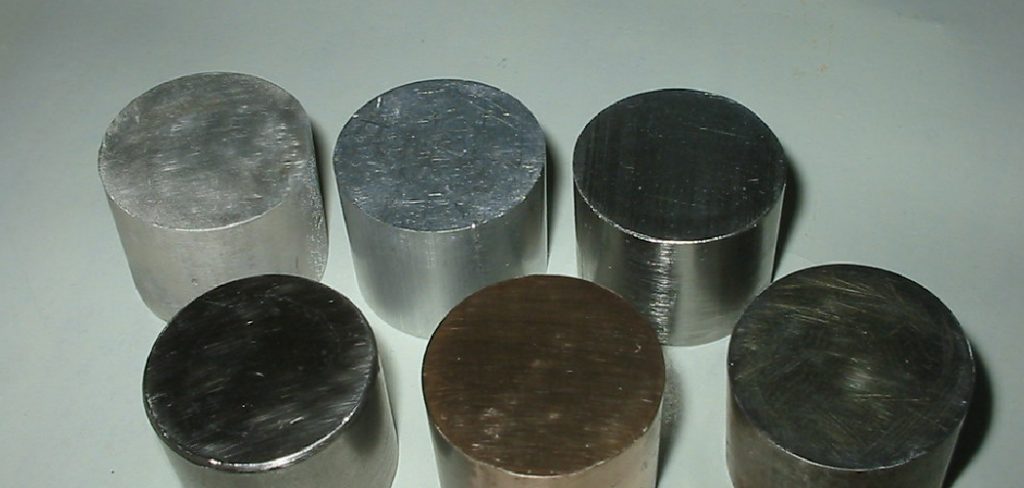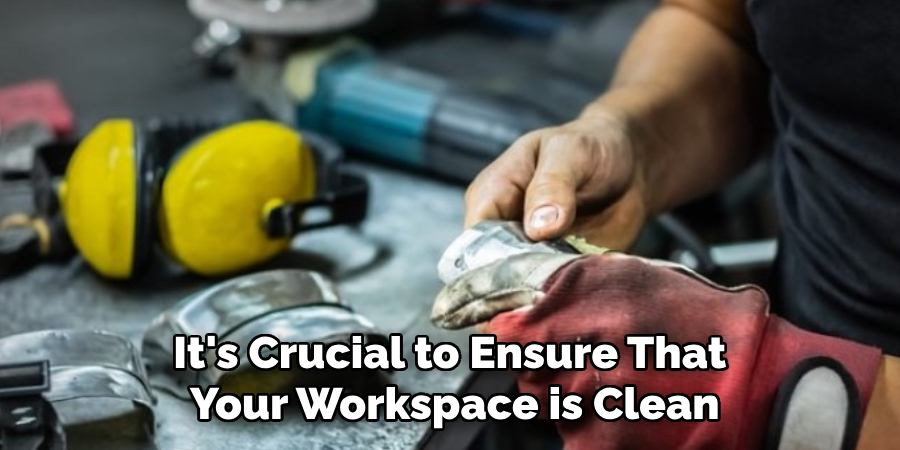When welding aluminum, achieving a clean and stable arc is crucial for high-quality results. Balling the tungsten is a recommended technique specifically when using alternating current (AC) TIG welding for aluminum. This process involves shaping the tungsten electrode into a rounded tip, which helps in reducing the risk of contaminant inclusions and arc wander. By properly balling the tungsten, welders can ensure a more consistent weld pool and improve the overall appearance and strength of the weld.

This guide on how to ball tungsten for aluminum will walk you through the essential steps to properly preparing tungsten for aluminum welding.
What is Tungsten?
Tungsten is a robust and versatile metal known for its exceptional properties, making it indispensable in various industrial applications. With the highest melting point of all metals, tungsten demonstrates remarkable thermal and chemical stability, which is particularly useful in high-temperature environments such as welding.
Its impressive density and hardness contribute to its strength, enabling it to withstand demanding conditions without degrading. In terms of electrical conductivity, tungsten performs effectively, facilitating consistent electrical arcs in welding processes, such as TIG welding. Due to these attributes, tungsten is a preferred electrode material for welding non-ferrous metals like aluminum, ensuring precision and reliability in each weld.
Why Ball Tungsten for Aluminum Welding?
Balling tungsten for aluminum welding is essential for achieving optimal weld quality and process efficiency. When welding aluminum using alternating current (AC) with a TIG welder, the power source alternates between positive and negative cycles. In this context, a balled tungsten electrode benefits the welder by providing a more stable and consistent arc. The rounded shape of the electrode minimizes arc wandering, ensuring the arc is directed precisely where needed.
This precision helps maintain control over the weld pool and contributes to a smoother, cleaner weld. Additionally, balling the tungsten reduces the risk of tungsten inclusions in the weld, which can compromise its strength and integrity. By adopting this technique, welders can achieve a more professional finish with fewer defects, ultimately extending the lifespan and reliability of the aluminum structures they create.
Needed Materials
Before beginning the process of balling tungsten for aluminum welding, ensure you have all the necessary equipment and materials. This includes:
- Tungsten Electrode (2% Thoriated or 2% Ceriated)
- Tig Welder
- Welding Gloves and Protective Gear
- Wire Brush/cleaner
8 Step-by-step Guidelines on How to Ball Tungsten for Aluminum
Step 1: Prepare Your Workspace

Before you begin the process of balling tungsten, it’s crucial to ensure that your workspace is clean, well-organized, and free of any potential hazards. Start by clearing any clutter from the area around your welding station to ensure you have adequate space to work safely and efficiently.
Ensure your TIG welder is securely placed and set up according to the manufacturer’s recommendations. Adequate ventilation or a fume extraction system should be in place to remove any hazardous fumes that arise during the welding process. Additionally, ensure your protective gear, such as welding gloves, helmet, and apron, is on hand, and check that your equipment is functioning correctly. This preparation will set the foundation for a smooth and safe balling process.
Step 2: Select the Appropriate Tungsten Electrode
Choosing the right type of tungsten electrode is crucial for achieving high-quality results. For balling tungsten for aluminum welding, it’s recommended to use either a 2% thoriated or 2% created tungsten electrode. These types of electrodes have excellent heat resistance and are suitable for welding non-ferrous metals like aluminum.
It’s important to note that thoriated tungsten electrodes contain a small amount of radioactive material, so proper safety precautions should be taken when handling and disposing of them.
Step 3: Prepare the Tungsten Electrode
Before starting the balling process, it’s essential to ensure that your tungsten electrode is clean and free of any contaminants. Any imprints, scratches, or dirt on the electrode can result in a poor-quality weld. Use a wire brush or dedicated tungsten cleaner to remove any surface impurities thoroughly.

After cleaning, use a pair of pliers to hold the electrode securely and polish the tip with sandpaper for a smooth finish. This process will also help remove any remaining impurities and prepare the electrode for balling.
Step 4: Set Up Your TIG Welder
Once your workspace is ready, set up your TIG welder according to the manufacturer’s specifications. Ensure that it’s set to AC current mode, which is specifically designed for welding aluminum. The amperage should be adjusted accordingly based on the thickness of the aluminum you’re working with.
You can also opt to use a tungsten grinder to sharpen and shape your electrode precisely, ensuring the best possible weld.
Step 5: Establish a Stable Arc
Before balling your tungsten, it’s crucial to establish a stable arc between the electrode and the workpiece. To do this, carefully touch the tungsten tip to the aluminum surface until you achieve an arc. Gradually increase amperage while maintaining a steady hand movement to create a consistent and narrow arc.
But be careful not to create a long arc, as this can cause tungsten protrusion and reduce the effectiveness of your welding.
Step 6: Ball the Tungsten Electrode
With a stable arc established, take your non-dominant hand and hold the electrode at an angle of approximately 20-30 degrees from the workpiece. Using your dominant hand, apply filler metal to the tip of the electrode until it forms a ball shape. Rotate the electrode slightly while applying filler metal for a uniform shape and size.
Be mindful not to overheat or melt the ball completely, as this can result in tungsten inclusions or contamination. Repeat this process as needed until you achieve a smooth, rounded ball on the electrode’s tip.
Step 7: Inspect and Retouch if Needed

Once you have balled your tungsten, carefully inspect the shape and size of the ball. It should be approximately 2-3 times the diameter of the electrode. If needed, use a pair of pliers to reshape or adjust the size of the ball until it meets these specifications.
It’s essential to remember that a properly balled tungsten electrode is critical for achieving optimal weld quality and minimizing defects.
Step 8: Begin Welding
Now that your tungsten electrode is properly balled, you can begin the welding process. Ensure that you maintain proper arc length, travel speed, and filler metal technique to achieve a clean and smooth weld. Regularly check the quality of your weld as you progress and adjust accordingly for the best results.
With these step-by-step guidelines on how to ball tungsten for aluminum, you can effectively ball tungsten for aluminum welding and achieve professional-quality results. However, it’s vital to continue practicing and refining your technique to become a skilled TIG welder. Remember to always prioritize safety and proper equipment maintenance to ensure longevity and reliability in your welding projects. So, keep practicing, stay safe, and happy welding!
How Much Tungsten Do I Need for Aluminum Welding?
The amount of tungsten needed for aluminum welding depends on various factors, such as the thickness of the material, desired weld quality, and the type of tungsten electrode used. Generally, a 1/16-inch diameter tungsten electrode is suitable for most jobs and can be balled to provide optimal arc stability. However, if you’re working with thicker materials or require more precise control over the weld puddle, a larger diameter electrode may be necessary.

It’s always best to consult your TIG welder’s manual or seek guidance from an experienced welder to determine the appropriate amount of tungsten for your specific project. Remember to always have extra tungsten on hand in case of any mishaps or necessary adjustments during the welding process.
Additional Tips for Successful Aluminum Welding
While balled tungsten electrodes are essential for achieving quality aluminum welds, here are some additional tips to keep in mind for successful TIG welding.
- Use a push or pull technique when welding aluminum rather than a side-to-side motion.
- Clean the workpiece thoroughly before welding to remove any oils or contaminants that can affect the weld quality.
- Maintain proper gas coverage and flow rate to prevent oxide formation on the welded area.
- Practice controlling heat input by adjusting amperage and travel speed for different material thicknesses.
- Keep your tungsten electrode sharp and clean throughout the welding process for optimal performance.
By following these tips on how to ball tungsten for aluminum, along with properly balled tungsten electrodes, you can achieve professional-quality aluminum welds that are strong, clean, and aesthetically pleasing. With practice and proper technique, you’ll become a skilled TIG welder in no time. Happy welding!
Conclusion
Balling tungsten for aluminum welding is a critical step in achieving high-quality welds. By following these step-by-step guidelines on how to ball tungsten for aluminum and using the right equipment, you can effectively ball your tungsten electrode and achieve professional results.
Remember to prioritize safety, maintain your equipment, and continue practicing to become a skilled TIG welder. Happy welding!
Edmund Sumlin is a skilled author for Metal Fixes, bringing 6 years of expertise in crafting a wide range of metal fixtures. With a strong background in metalwork, Edmund’s knowledge spans various types of fixtures, from decorative pieces to functional hardware, blending precision with creativity. His passion for metalworking and design has made him a trusted resource in the industry.
Professional Focus:
- Expert in Metal Fixtures : Edmund aesthetic specializes in creating durable and innovative metal fixtures, offering both appeal and functionality. His work reflects a deep understanding of metalworking techniques and materials.
- Sustainability Advocate : He is dedicated to using sustainable practices, ensuring that every fixture is crafted with eco-friendly methods while maintaining high-quality standards.
In his writing for Metal Fixes, Edmund provides valuable insights into the latest trends, techniques, and practical advice for those passionate about metal fixtures, whether they are professionals or DIY enthusiasts. His focus on combining artistry with engineering helps others discover the true potential of metal in design.


